Records lost, hundreds of displaced students: Kentucky floods have thrown schools into crisis mode
BUCKHORN, Ky. — Kentucky Education Commissioner Jason E. Glass and state Education Department officials spent this week assessing the damage schools sustained after devastating floodwaters swept through eastern Kentucky last month. At least 1,100 students remain displaced from their homes in one school district alone.
While most students across the country are kicking off the new school year, many in eastern Kentucky school districts are still figuring out where they will attend classes or when they’ll be able to start. More than 7,600 Kentucky students are still affected, and their start dates have been pushed into September, according to the state Education Department.
“It was sobering to see the damage, just driving along the road and seeing refrigerators and couches where the floodwater receded,” said Toni Konz Tatman, the chief communications officer for the Education Department, who accompanied Glass. “All of the schools we visited took between 4 and 6 feet of water, so you could actually see the water line on the wall and all those floors that need to be ripped up. There’s a lot of work ahead.”
One place with a lot of work ahead is Buckhorn School, which teaches nearly 350 K-12 students in this small town and took almost 8 feet of water.
Most of the school’s desks and chairs are piled out in the parking lot now as workers in white hazmat suits walk in and out dragging out debris and drywall. The bent metal siding of a double-wide trailer covers the outdoor lunch area, truck tires were found inside classrooms, and a telephone pole came to rest in the school’s hallway.
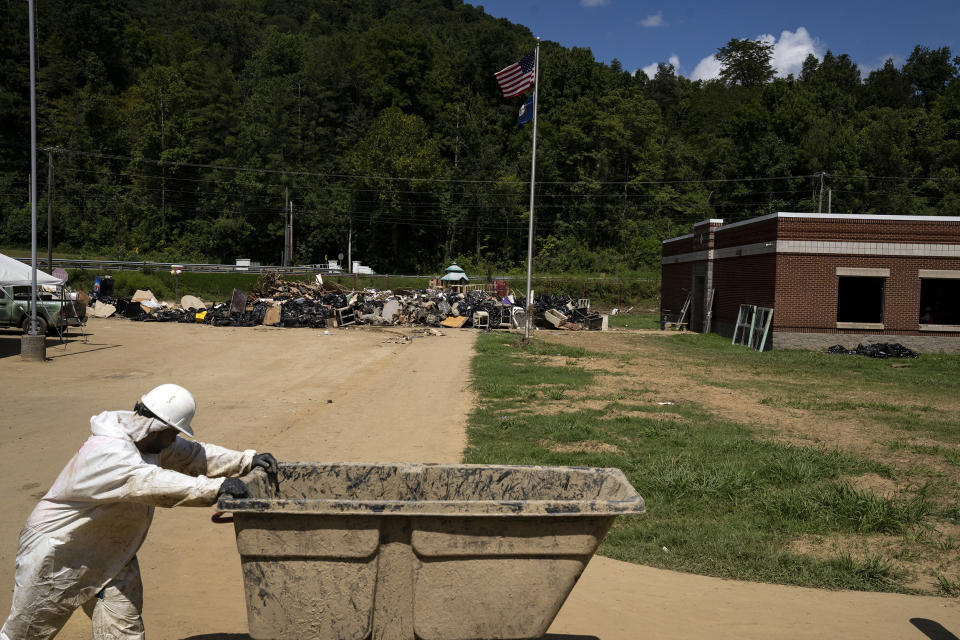
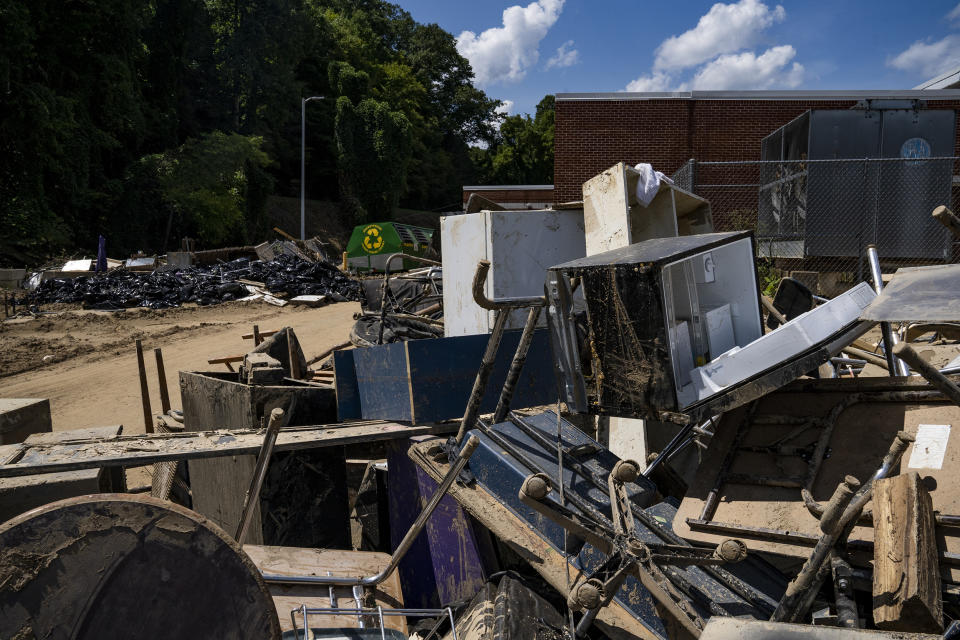
Despite its loss, Buckhorn School, which serves as a primary backbone of the community, is considered one of the lucky cases. It plans to move students to the A.B. Combs Elementary School building, which was abandoned after the district consolidated facilities.
But it will be at least a year until classes return to the school in Buckhorn, and in the meantime students will have to travel on buses for up to an hour to get to class.
“We’ve spoken to all our families and know they’re all OK, but we’re going to lose some of them to other schools — there’s no doubt about that,” Principal Tim Wooten said. “We just keep asking that they give us one year to get things back. That’s what we do here: Whatever it is, we make it work.”
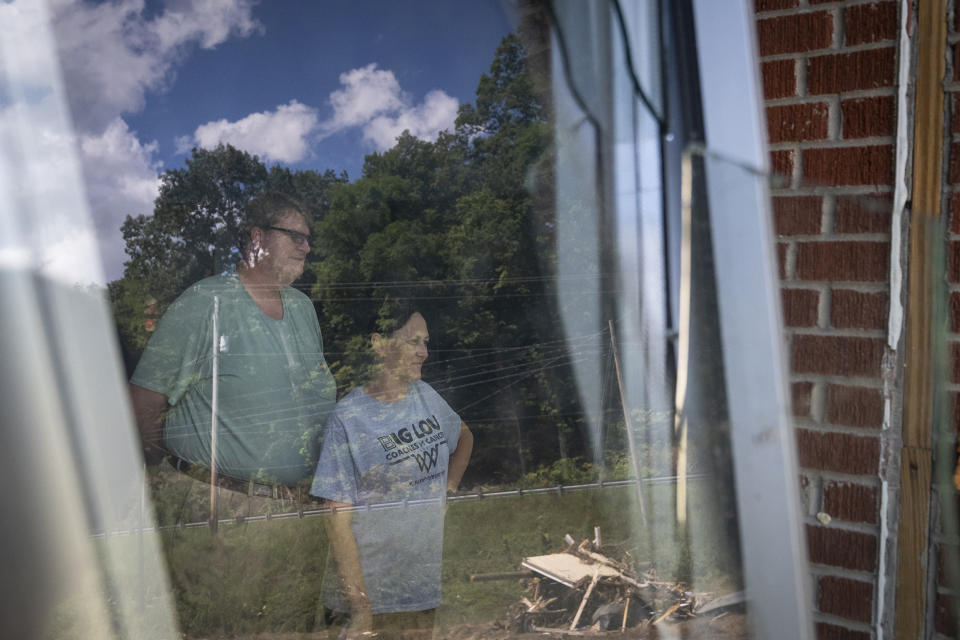
Buckhorn isn’t the only town struggling to kick off the school year. Letcher County Public Schools, Jenkins Independent Schools, Knott County Schools and Leslie County Schools have all pushed back their start dates. Leslie will start next week, and Knott and Jenkins are targeting a mid-to-late September return, while Letcher still hasn’t set a return date.
Letcher County, where more than 90% of the students receive free or reduced-price lunch, suffered massive devastation from the flooding last month. More than 1,250 homes were left uninhabitable, and around 1,100 students were displaced, according to the state Education Department.
Schools like those in Letcher County are trying not just to figure out where to have students attend class, but also how to get them there. Many of the roads and bridges are so damaged that some believe driving a heavy school bus on them could lead to an accident, which has caused some districts to consider using fleets of vans or large SUVs to pick up students.
Denise Yonts, the superintendent of Letcher County Public Schools, said she has already spent $3 million — a huge sum for the district — on cleanup and hasn’t gotten an estimate back yet for the total restoration of the six buildings that were damaged: a middle school, two elementary schools, a gym and a vocational school.
Yonts and other superintendents fear that they could fall into a spiral in which they would lose students, which would reduce their funding and ultimately hinder the schools’ recoveries. In small towns and communities in Kentucky, the schools are essential backbones and major employers. Their loss can be existential emotionally and financially.
“The long-term effect and reality is the more kids we lose, the lower our budget is, and that’s going to affect us for years,” she said. “And so getting and having temporary housing here and having the infrastructure restored here is the only way that we’re going to be able to continue to help our kids and keep kids in school here.”
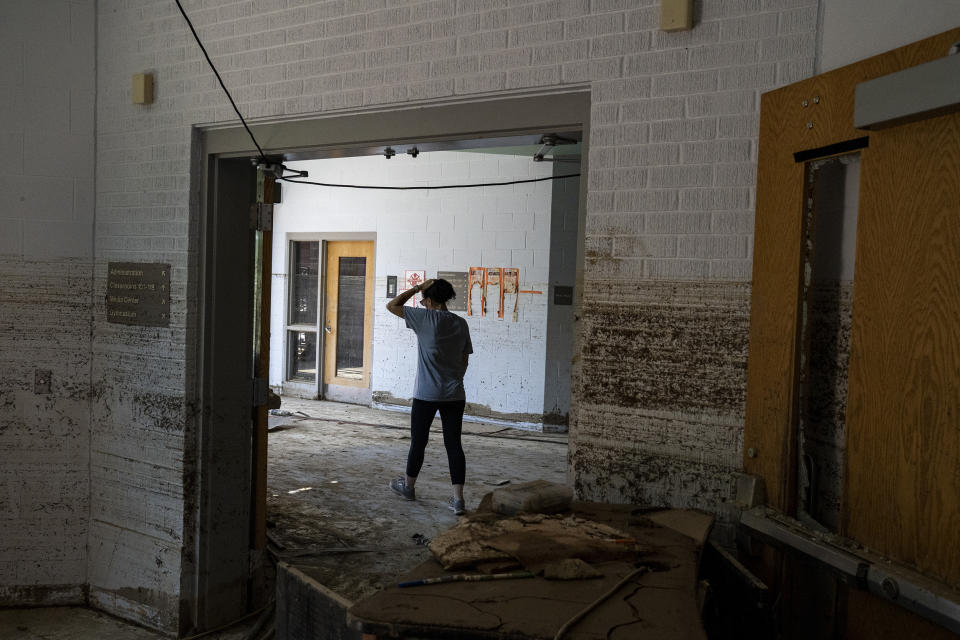
Kentucky Gov. Andy Beshear, a Democrat, called for a special legislative session last week to pull together an economic package that would immediately aid eastern Kentucky. Superintendents of affected school districts had told the state government that they were concerned about school year start dates, meeting the mandatory number of attendance days and finding assistance for teachers, many of whom lost their own homes and cars to the flooding.
At the end of the three-day special session Friday, the Legislature had allocated $213 million for disaster relief, which included $40 million for the Education Department to dole out for school cleanup and repair. The measure also included waiving up to 15 student attendance days and expanding the options for remote learning and emergency leave for teachers.
The $40 million will serve only as a down payment on the damage, said Tatman, of the Education Department.
“It’s really for your immediate needs right now, your needs that are going to pop up, but it also includes money for not physical items,” Tatman said. “It could be, you know, things to address mental health or to provide support for not only our students, but our staff. They’re also coming back to these schools and these buildings, but they also need to be supported. So many have lost everything and are still working.”
The schools also lost irreplaceable records, both physical and digital, and will have to work to rebuild much of their internal digital infrastructure.
Buckhorn schools backed up much of their materials on external hard drives that are now soaked and inoperable. Christie Stamper, an assistant principal of Buckhorn School, said the school lost student records, internal policies and curriculum materials. Paper copies of student records dating to the 1950s are almost a total loss after they were left waterlogged and stuck together.
Stamper tried to salvage a three-ring binder of her materials by leaving it to dry out in the sun on top of a broken trophy case — the shattered glass spraying light across the golden trophies that remained.
“Everything that runs a school was on [the hard drives]. We were not expecting a flood. We were expecting a computer to crash or, you know, hackers,” she said, leaning back in the chair of a temporary office space across the street from the now-empty school. “Everything was on there: school trips, slideshows, events at schools, policies, plans, procedures, school safety for the building — everything.”
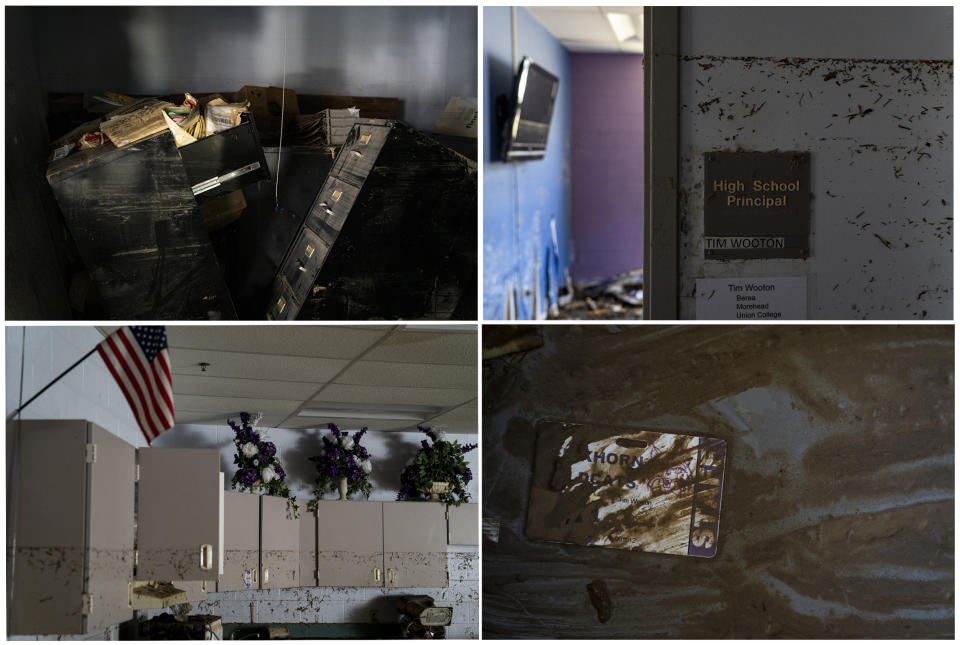
Educators will also be navigating the emotional toll the flooding has taken on the area’s children and how it will affect them at home and in school this year.
Stamper said she sees it in her own son, who needs her to read him the weather before he goes to bed so he knows what weather will come in the night. She and other school leaders in multiple districts said staff members are already preparing for a year focused on student mental health, as many parents have told them their kids experience anxiety when storm clouds brew or rain begins to fall.
Childhood hunger was already a concern in this area defined by disappearing coal-mining jobs. That need has only gotten greater since the flooding.
Food banks in central and eastern Kentucky reported having provided individuals and families more than 40 million pounds of food in fiscal year 2022, which ended on July 31, to address the fact that 1 in 6 people in the area don’t know where their next meals are coming from. Food insecurity rates in the schools affected by the flooding often run much higher.
That’s why Judy Eversole, the family resource and youth services center director at Buckhorn School, and Olivia Day, its early studies coordinator, spent a day last week checking on families and handing out $2,600 worth of food cards.
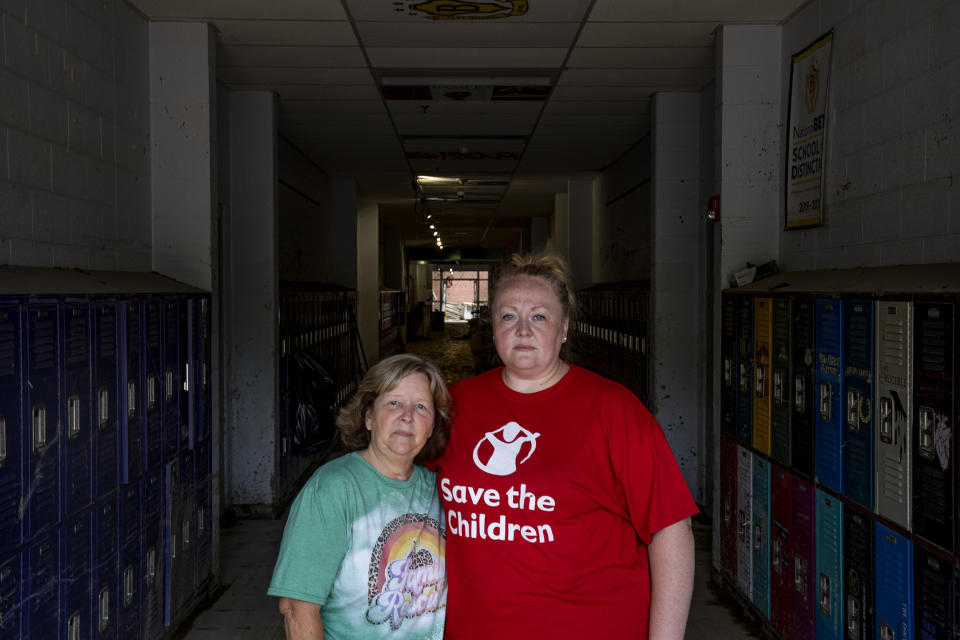
Eversole said her mantra as she talked to families was that it would be only a year until they were back in school — one school year and then a return to normalcy.
“We’ll be at this temporary place, but we’ll come back — and I promised them that,” she said as a fresh crew of workers in white hazmat suits arrived at the school, where the smell of rotting food from the cafeteria hung in the air. “We have a long road, but we’re resilient. We’re not just a school here: We’re a family.”
This article was originally published on NBCNews.com

